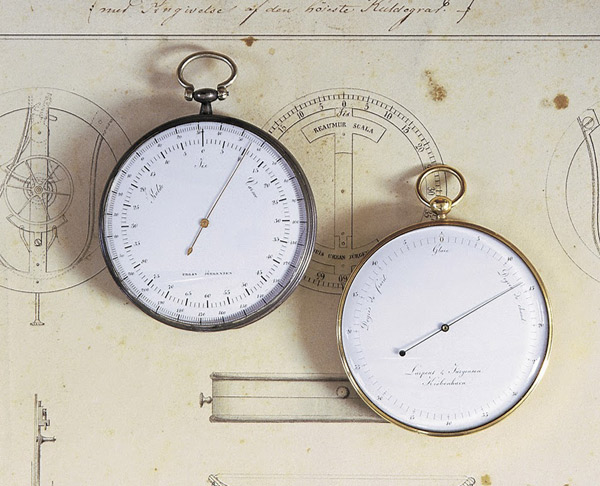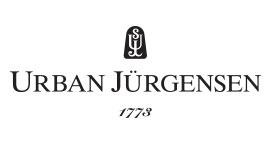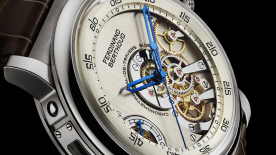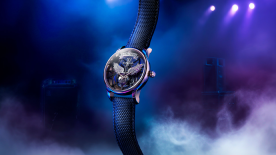The distinction is important, since Urban Jürgensen was, of course, already producing timepieces when he worked with his father. However, his father was less interested in precision horology and more so in selling simple, quality timepieces for general use, rather than complex marine chronometers and scientific instruments.
When he set up his business in 1811, Urban Jürgensen began to sign his products with his name. But one of his most significant creations is not even a timepiece but a bi-metallic pocket thermometer that he first developed in Switzerland. These can be signed “Larpent & Jürgensen”, “Urban Jürgensen” and “Louis Urban Jürgensen” and, while it is uncertain how many were actually made in total, the distribution across these three signatures can be considered more or less equal.

All Urban Jürgensen pocket watches were signed on the dial. Things are different for the movements, however, depending on whether they were produced entirely in-house or based on imported movement blanks. The former would be signed on the mainplate, whereas the latter would be signed on the dust cover. One can assume that an Urban Jürgensen watch with an unsigned dial has had its dial replaced.
The business got off to a flying start, producing 260 timepieces in its three years – an impressive feat given the bleak economic outlook at the time. This soon dropped, however, to a maximum of 20 watches per year in the 1820s as the company delved deeper into the world of precision timekeeping and took on repair, cleaning and adjusting work on timepieces made elsewhere.
One of the exemplary pieces from this latter period is perhaps the most famous Urban Jürgensen pocket chronometer. It is the 1820 “Krusenstern” chronometer that was offered by Frederik VI, the King of Denmark, to Baron Krusenstern of Russia, the first person in Russia to circumnavigate the world.
Although Urban Jürgensen learned how to produce tourbillon escapements, he made very few of them and only one example is known, using a Houriet movement blank. Instead, he concentrated on marine chronometers, preferring chronometer escapements over constant force mechanisms. He favoured Thomas Earnshaw’s design over John Arnold’s but nevertheless believed it could be further improved. His answer was the detached double-wheel duplex chronometer escapement, which combined Earnshaw’s chronometer escapement with Dutertre’s duplex escapement. It consisted of two escape wheels mounted on the same arbor – a smaller wheel to give the impulse and a bigger one (twice the diameter of the smaller one) for the locking, which reduced the pressure on the locking stone.
Although billed as an improvement on the Earnshaw escapement, the double-wheel duplex escapement did not find widespread use, primarily because it involved more work but – more significantly – greater inertia. It turned out that a single wheel could achieve the same results and Earnshaw himself doubted whether the invention had any real value.
At the most complex end of his work, Urban Jürgensen produced just six observatory regulators. The reason for the low number is similar to the reasons for the relatively low numbers of watches he produced: since he was arguably the only person in the country capable of producing such instruments, he first had to make his own tools. In the case of observatory regulators this included the crucial pyrometer that was used to adjust the compensation pendulum the powered such regulators. It is not even certain whether the last two such movements had even been fitted into the cases at the time of Urban’s death and the fifth one is signed “Louis Urban Jürgensen”. Both of the clocks housing these movements are in private hands, which maintains the air of mystery.




